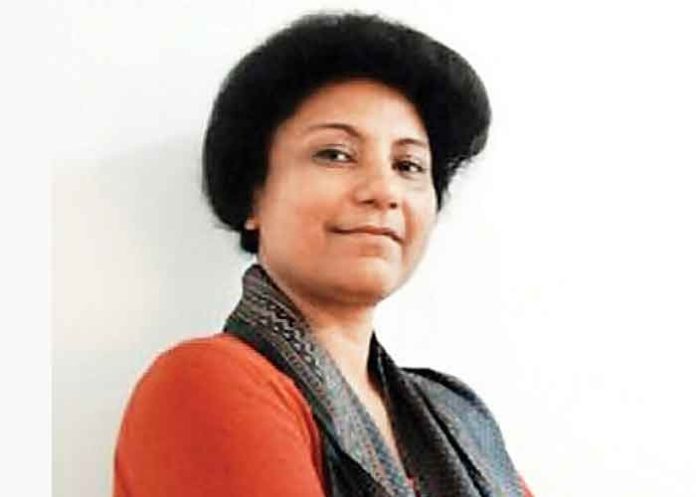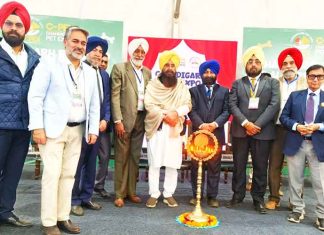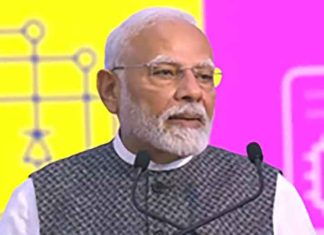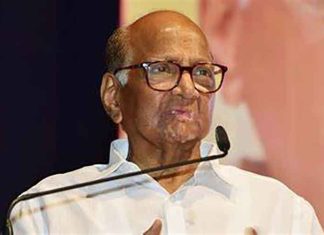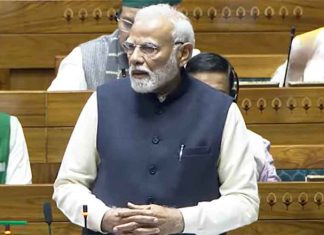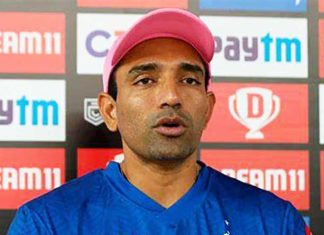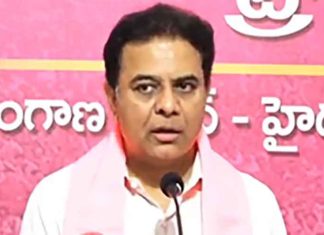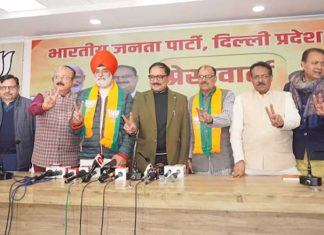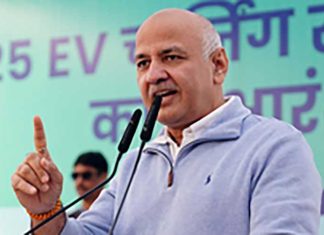New Delhi, August 6, 2024 (Yes Punjab News)
A new nation-wide analysis by Centre for Science and Environment (CSE) says that in the summer of 2024, the levels of ground-level ozone in the air went up in the 10 major metropolitan areas of India.
These areas and cities include Bengaluru Metropolitan Area (Karnataka), Chennai Metropolitan Area (Tamil Nadu), Delhi-NCR, Greater Ahmedabad (Gujarat), Greater Hyderabad (Telangana), Greater Jaipur (Rajasthan), Kolkata Metropolitan Area (West Bengal), Greater Lucknow (Uttar Pradesh), Mumbai Metropolitan Region (Maharashtra) and Pune Metropolitan Region (Maharashtra).
Says Anumita Roychowdhury, executive director, research and advocacy, CSE: “Ground-level ozone, a highly reactive gas, has serious health consequences.
Those with respiratory conditions, asthma and chronic obstructive pulmonary disease – as well as children with premature lungs and older adults — are at serious risk. This can inflame and damage airways, make lungs susceptible to infection, aggravate asthma, emphysema, and chronic bronchitis and increase the frequency of asthma attacks leading to increased hospitalisation.”
The 2020 State of Global Air report states that age-standardised rates of death attributable to ground-level ozone is among the highest in India. The seasonal eight-hour daily maximum concentrations have recorded one of the highest increases in India between 2010 and 2017 – about 17 per cent.
Ozone needs special attention — ground-level ozone is not directly emitted from any source. It is produced from complex interaction between nitrogen oxides (NOx) and volatile organic compounds (VOCs) that are emitted from vehicles, power plants, factories, and other combustion sources and undergo cyclic reactions in the presence of sunlight to generate ground-level ozone. VOCs can also be emitted from natural sources, such as plants.
Roychowdhury points out that as the National Clean Air Programme (NCAP) gears up for its second phase, “its reform agenda has to address the multi-pollutant crisis and the combined threat from PM2.5, ozone, nitrogen oxides and other gases. Global experience shows that there is usually a trade-off — as particulate pollution gets reduced, the problem of NOx and ground-level ozone increases.
This requires significant tightening of the regulatory benchmark for ozone to address the toxic emisisons from industry, vehicles, households and open burning”.
“Moreover, ozone not only builds up in metropolitan areas but also drifts long distances to form a regional pollutant that makes both local and regional action necessary,” she adds.
According to Avikal Somvanshi, programme manager, Urban Lab, CSE, who has led the CSE study, “in 2024, we have found that the geographical spread of the problem is much wider than what we had seen in the lockdown summer of 2020 in most metropolitan areas.
This time’s toxic build-up has lasted longer in locations affected by the problem. Even the smaller metropolitan areas have witnessed rapid increase. In metropolitan areas in the south and western coastal belt, the problem is not limited only to the summer months.”
Adds Somvanshi: “Inadequate monitoring, limited data and inappropriate methods of trend analysis have weakened the understanding of this growing public health hazard.
The complex chemistry of ground-level ozone makes it a difficult pollutant to track and mitigate. Due to its toxic nature, ozone’s national ambient air quality standard has been set for only short-term exposures (one-hour and eight-hour averages), and compliance is measured by the number of days that exceed the standards. This requires early action.”
The investigation methodology
This assessment has traced trends during summer (April 1-July 18). The data covered is from 2020 to 2024. The analysis is based on publicly available granular real time data (15-minute averages) from the Central Pollution Control Board’s (CPCB) official online portal, the Central Control Room for Air Quality Management.
The data has been captured from official stations under the Continuous Ambient Air Quality Monitoring System (CAAQMS) spread across 10 metropolitan regions.
The station break-up is as follows: Delhi-NCR (58 stations), Mumbai Metropolitan Region (48), Kolkata Metropolitan Area (10), Greater Hyderabad (14), Bengaluru Metropolitan Area (14), Chennai Metropolitan Area (nine), Pune Metropolitan Region (15), Greater Ahmedabad (10), Greater Lucknow (seven) and Greater Jaipur (six).
Sharanjeet Kaur, programme officer, Urban Lab, CSE, says: “This analysis has considered station-level trends in terms of number of days exceeding the eight -hour standard over time.
The study has considered global good practices and taken on board the USEPA approach of computing eight-hour averages for a day and then checking for the maximum value among them to capture the daily ozone pollution level.
The key highlights of the CSE analysis
Monitoring of ozone and method of its trend analysis need to improve to inform policy: the compliance method as set by the CPCB requires that the ozone standards are met for 98 per cent of the time in the year.
It may exceed the limits on two per cent of the days in a year, but not on two consecutive days of monitoring. Says Kaur: “In other words, there should not be more than eight days in a year when the ozone standard is breeched, and none of those allowed exceedances can be on two consecutive days.”
Somvanshi explains: “The standard practice of the CPCB to average out the data of all stations in the city to determine daily AQI does not work for ground-level ozone as it is a short-lived and hyper-localised pollutant.
A city-wide average concentration level over an extended time frame does not indicate the severity of the problem and health implications from local build-up and exposure for people living in hotspots.”
Adds Somvanshi: “While analysing the data, it was also noted that the ozone data available on the CPCB portal never exceeds 200 microgramme per cubic metre (μg/m3) while data for the corresponding time provided by the Delhi Pollution Control Committee may show higher levels.
Due to this capping of data, it is not possible to understand the nature of peaking in the city. This needs to be addressed as there are two sets of standards for ozone – an eight-hourly standard of 100 μg/m3 and a one-hourly standard of 180 μg/m3. Capping makes assessment of one-hourly standard challenging.”
Ground-level ozone exceedance has been reported in all 10 metropolitan areas, with Delhi being the most affected: This year, so far, Delhi-NCR has recorded 176 days of exceedances during the study period.
Mumbai-MMR and Pune are tied at the second spot with 138 days of exceedance each. Jaipur recorded an exceedance on 126 days; Hyderabad, on 86 days; Kolkata-KMA, 63 days; Bengaluru, 59 days; Lucknow, 49 days; and Ahmedabad, 41 days. The least number of exceedance was recorded in Chennai: a mere nine days.
Ground-level ozone exceedance is more frequent during summer for Delhi-NCR, Jaipur, Kolkata-KMA, Lucknow, Ahmedabad and Chennai. In Mumbai-MMR, Pune, Hyderabad, and Bengalure, more exceedances were reported during January-March than during the summer (April-July).
A massive increase in ground-level ozone exceedance is reported in smaller metropolitan areas: Comparing the number of exceedances this year so far with the same period from last year shows an increase in seven out of 10 metropolitan areas analysed in this study. The smaller metropolitan areas have had the biggest jumps, with Ahmedabad registering a 4,000 per cent rise in number of exceedances.
Pune follows with 500 per cent, and Jaipur had a 152 per cent increase. Hyderabad registerd a 115 per cent rise in number of exceedance days; Mumbai-MMR and Bengaluru saw an 18 per cent and 1 per cent increase, respectively. Less than 5 per cent change has been noted in Delhi-NCR and Lucknow. Meanwhile, Kolkata-KMA and Chennai have seen a drop in the number of exceedances by 19 per cent and 40 per cent, respectively.
Summer ground-level ozone peak is dangerously high in all 10 metropolitan areas: Even though the number of exceedance days is highest among Delhi-NCR and Mumbai-MMR (partly because they have highest number of stations), but from regional average concentration and peak level perspective, Jaipur air is more toxic.
The regional average of Jaipur for April 1 to July 15 is 81.2 µg/m3 compared to Delhi-NCR’s 73.3 µg/m3 and Mumbai-MMR’s 34.8 µg/m3. Chennai has the lowest regional average of 24.3 µg/m3 but the peak recorded in the southern metro was 192.7 µg/m3, third highest among the 10 metropolitan areas — only exceeded by Jaipur (205.9 µg/m3) and Delhi-NCR (194.2 µg/m3).
Mumbai-MMR’s peak was fourth highest at 186.1 µg/m3. Lucknow had a regional average of 54.9 µg/m3 and regional peak of 179.1 µg/m3. Pune had a regional average of 53.6 µg/m3 and a regional peak of 163.6 µg/m3.
Ahmedabad had a regional average of 53.3 µg/m3 and regional peak of 172.6 µg/m3. Kolkata-KMA had a regional average of 38.8 µg/m3 and regional peak of 160.4 µg/m3. Bengaluru had a regional average of 35.3 µg/m3 and regional peak of 110.7 µg/m3 (lowest peak among the metropolitan areas). Hyderabad had a regional average of 32.8 µg/m3 and regional peak of 129.1 µg/m3.
Says Somvanshi: “Given the data cap of 200 µg/m3 enforced by the CPCB at 15-minute granularity, it is stunning to observe that multiple stations are still logging eight-hourly averages close to 200 µg/m3 across the country. This underscores the magnitude of the pollution.”
Duration of ground-level ozone pollution exceedance unhealthily long across all metropolitan areas, smaller metropolitan areas worst: Ground-level ozone exposure standard is defined in terms of one-hourly average and eight-hourly average — but this standard is breeched for much longer durations.
This summer, at the stations which reported exceedance, it lasted on an average of 11.9 hours in Bengaluru which was the lowest among the 10 metropolitan areas; the highest was in Lucknow where it lasted an average of 15.7 hours.
Average exceedance duration in Pune, Jaipur and Ahmedabad was 15.1 hours, 14.2 hours and 14.2 hours respectively. Average duration ranged between 12 and 14 hours for Delhi-NCR, Mumbai-MMR, Chennai, Kolkata-KMA and Hyderabad.
Night-time ground-level ozone continues to persist in all metropolitan areas: Ground-level ozone should ideally become negligible in the night air, but all 10 metropolitan areas have been witnessing a rare phenomenon where ozone levels remain elevated hours after sunset. Night-time ozone has been considered when hourly concentration has exceeded the level of 100 µg/m3 between 10 PM and 2 AM at any station.
Mumbai-MMR reported most instances of night-time ground-level ozone, with 171 nights of exceedance. It is followed by Delhi-NCR and Pune with 161 nights and 131 nights respectively. Hyderabad recorded exceedance on 94 nights; Ahmedabad, on 68 nights. Lucknow had 26 exceedance nights while Chennai had 24 and Bengaluru, 22. The least number of exceedances was recorded in Kolkata: 17 nights.
Like day-time ground-level ozone exceedance, night-time exceedances are also recorded throughout January to July in all metropolitan areas. But unlike day-time exceedances, there is no regional variation in the seasonality of night-time exceedances as all metropolitan areas record a majority of them during summer (April-July).
Ground-level ozone hotspots are located in areas with low levels of NO2 and PM2.5: The spatial distribution of ground-level ozone is the inverse of NO2 and PM2.5.
This bears out the fact that while ozone is created in polluted areas with nitrogen oxide being the catalyst, it also gets mopped up in high NO2 areas as it further reacts. But the ozone that escapes to cleaner areas with less NO2 builds up faster, as unavailability of NO2 hampers its dissipation.
High end and green neighborhoods are worst affected: Dr Karni Singh Shooting Range and Lodi Colony in Delhi, Navy Nagar in Mumbai, Fort William in Kolkata, Kapra in Hyderabad, BMT Layout in Bengaluru, Velachery in Chennai, Savitribai Phule University in Pune, Police Commissionerate in Jaipur, Gomti Nagar in Lucknow and Maninagar in Ahmedabad are all hotspots for ground-level ozone pollution.
“This is consistent with the science that ozone drifts and gathers in areas where comparativey lesser amount of gaseous pollutants are persent to further mop it up. Thus, relatively cleaner areas including urban peripheries can have comparatively higher ozone concentration,” says Roychowdhury.
Ground-level ozone has become a year-long problem: “Even though ground-level ozone exceedance is assumed to be at its worst during summer months, data from the 10 metropolitan areas analysed in our study shows that it remains a year-long problem,” says Somvanshi.
The intensity and spatial spread dip during non-summer days, but a few locations continue to record exceedance throughout the year. Build-up of ground-level ozone can happen anytime during the year in the sunnier metropolitan areas of south India, but it occurs usually in small pockets during the non-summer months.
For it to have a wider spatial spread, hot and sunny weather conditions are needed which are generally present in summer – especially during April-May; but there is a considerable uptick in ozone pollution after monsoon, especially during October-November.
Foggy and cold conditions of January in north India conventionally inhibit formation of ground-level ozone. But the study found that ozone was exceeding at multiple stations in Delhi.
Critical to act immediately
Says Roychowdhury: “This finding has significant implcations for the NCAP programme that is currently focusing more on controlling PM10 or coarse dust. India must immediately refine the action strategy for combined control of particulate pollution, ozone and its precursor gases like NOx to maximise the co-benefits of the action plan.
We need stringent control of precursor gases from vehicles, industry, cooking on solid fuels, open burning and other combustion sources while reducing PM2.5.”
Simultaneously, the country needs to develop a robust public information and dissemination system to alert the public about ozone exceedance — wherever ozone build-up is happening.




